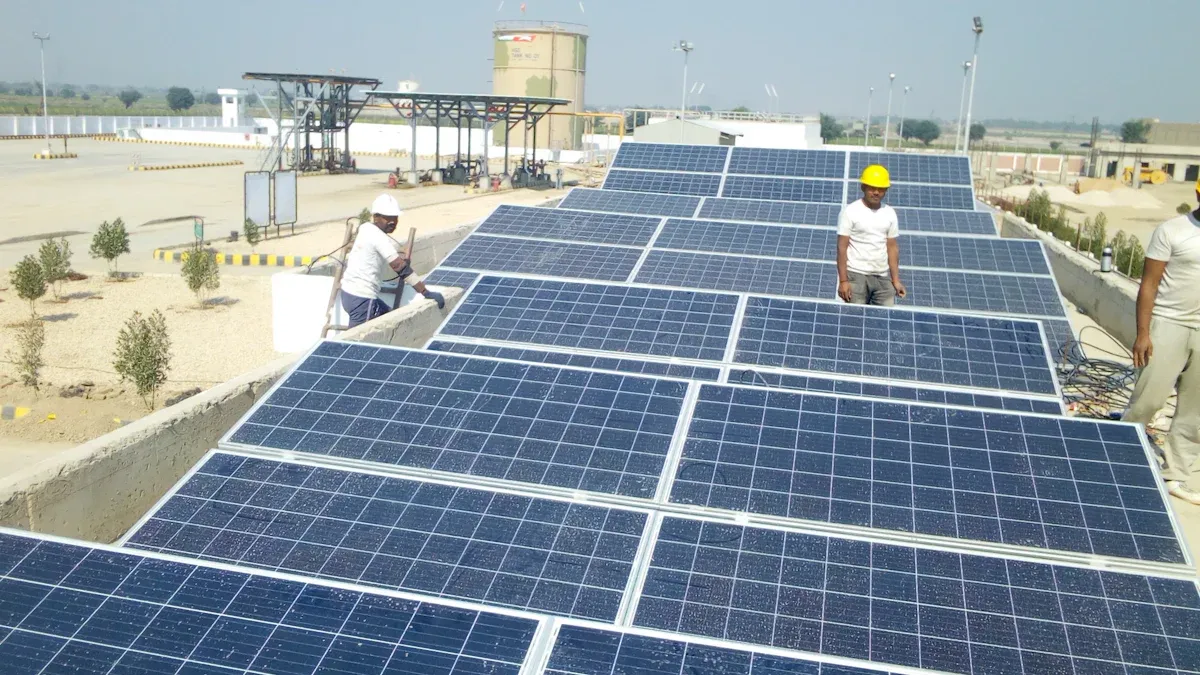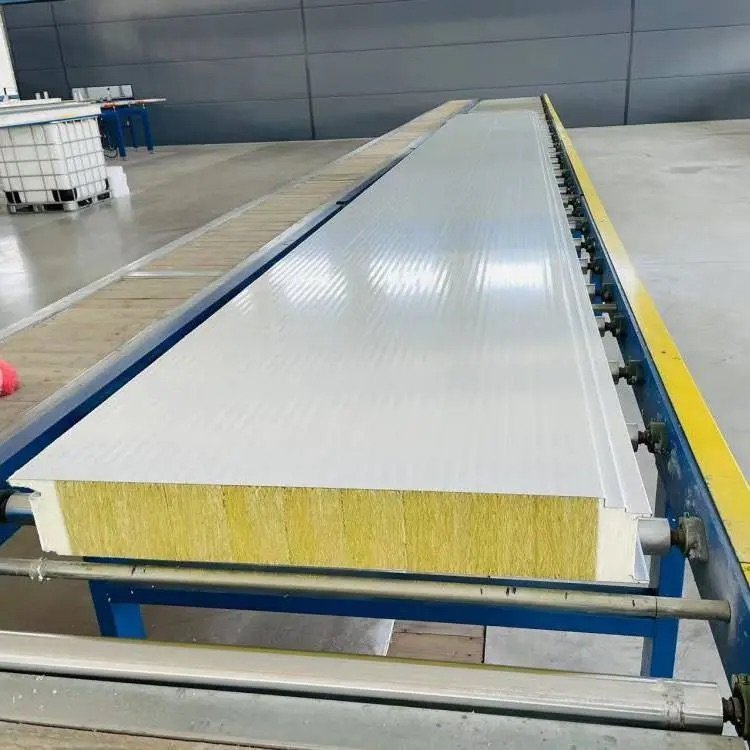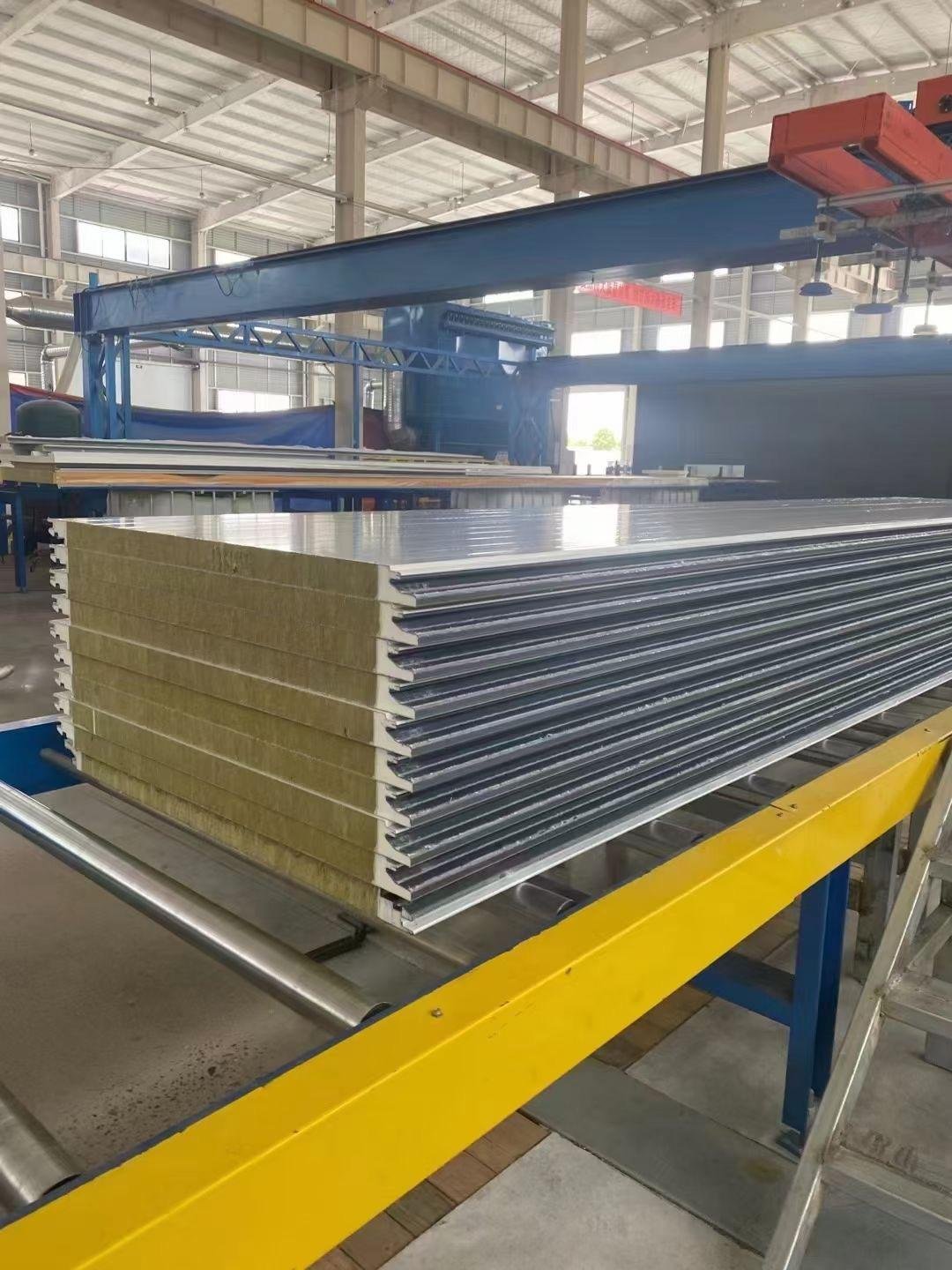
Installing sandwich panels correctly is very important for good results, and employing effective Installation Strategies is essential. Using the right methods helps the panels last longer and save energy. Preparing well, using the right tools, and being careful during work are key steps. By implementing these Installation Strategies, you can build something strong and efficient.
Key Takeaways
Get ready first. Check the site and measure to make sure it can hold the panels.
Use proper tools. Cutting tools and fasteners help install and secure panels safely.
Stay safe! Wear safety gear and use scaffolding for a steady work area.
Seal edges tightly. Good sealants stop leaks and keep panels insulated.
Take care of panels. Check for damage and clean them to last longer.
Preparation for Successful Installation
Site Assessment
Checking if the structure is ready
Before starting, check if the structure can hold the panels. Make sure it can handle the weight and size of the panels. Look for cracks or uneven areas that might cause problems. A strong structure keeps the panels safe and working well.
Taking correct measurements and marking alignment
Measuring correctly is very important for good installation. Use tools to check if the structure matches the panel sizes. Mark spots to guide where the panels will go. This avoids gaps or poor fitting.
Material Inspection
Looking for damage on panels
Check each panel closely before using them. Look for dents, scratches, or other damage. Special tests, like thermography or ultrasonic checks, can find hidden problems. For example, a study showed these tests help find damage that weakens panels.
Study Title | Method Used | Findings |
|---|---|---|
Low-Velocity Impact Damage Quantification on Sandwich Panels by Thermographic and Ultrasonic Procedures | Thermography, Ultrasonic Procedures | Found hidden damage that weakens panels, showing the need for these tests. |
Making sure panels meet project needs
Pick the right panels for your project. Check if they have the right thickness, insulation, and fire safety. This ensures they work well and fit the structure properly.
Safety Measures
Wearing safety gear
Safety is very important during installation. Always wear helmets, gloves, and goggles. Use safety ropes or harnesses when working high up. These steps keep you safe from accidents.
Setting up scaffolding or supports
Use scaffolding or supports to create a stable work area. Make sure they are strong and can hold the panels and tools. Good supports make work safer and easier.
Tools and Materials for Sandwich Panel Installation

Essential Tools
Cutting tools for precise panel sizing
Cutting tools help panels fit perfectly. Use tools like saws to trim panels without harming edges. Accurate cutting stops gaps that affect insulation and strength. Always pick tools made for sandwich panels for the best results.
Fastening tools like drills and screws
Fastening tools attach panels to the structure. Use drills with torque settings to avoid over-tightening screws. Strong screws hold panels firmly, making them safe and durable. Keep extra screws and bits ready to avoid delays.
Supporting Materials
Sealants and adhesives for waterproofing
Sealants and adhesives seal joints and keep water out. Choose low-VOC sealants to improve air quality and reduce harmful chemicals. Caulk-type sealants are easier to use than spray foam. Using good materials ensures safety and long-lasting results.
Benefits of using high-quality sealants and adhesives:
Better indoor air quality.
Less exposure to harmful chemicals.
Easier teamwork for material choices.
Insulation materials for enhanced thermal performance
Insulation keeps energy use low by controlling temperatures. It cuts heating and cooling costs. Pick insulation that fits your project’s needs. Good insulation also stops condensation, protecting panels and the structure.
Efficiency-Boosting Tools
Lifting machines or suction cups for heavy panels
Heavy panels are hard to handle. Lifting machines or suction cups make it safer and easier. These tools lower injury risks and place panels precisely. They save time and effort, speeding up the work.
Laser levels for accurate alignment
Laser levels help install panels straight and even. They give exact layouts and save time. Builders use them for their accuracy and cost benefits. New laser tools with smart features make work faster and simpler.
Evidence Type | Description |
|---|---|
Demand for Precision | Builders need laser levels for exact layouts and alignment. |
Cost Savings | Laser levels save money by improving efficiency. |
Infrastructure Growth | Asia needs $1.7 trillion yearly for building projects, boosting demand for precision tools. |
Innovations in Technology | Better laser tools are more accurate and easy to use, helping many industries. |
Installation Techniques for Roof and Wall Panels

Roof Sandwich Panel Installation
Placing panels along the roof slope
Start by placing panels along the roof slope. This helps water drain properly and avoids pooling. Use lifting tools or suction cups to move heavy panels safely. Align each panel carefully to prevent gaps or uneven edges. Secure the panels tightly for stability. Use drills with torque settings to fasten screws into the top flute of the metal deck. This method makes the panels stronger and more durable.
Installation Technique | Description |
|---|---|
Use portable weights to evenly press foam adhesive while it cures. | |
Proper Fastener Placement | Fasteners should go into the top flute of the metal deck for better strength. |
Correct Fastener Type | Use insulation plates instead of seam plates to avoid problems. |
Overlapping panels and securing with screws
Slightly overlap the panels to create a tight seal. This stops water from leaking in and improves insulation. Secure the overlaps with screws placed straight into the roof surface. This ensures proper fit and avoids mistakes. Check welded seams daily with a seam probe to ensure quality and fix any issues like loose screws.
Wall Sandwich Panel Installation
Vertical and horizontal placement options
For walls, choose vertical or horizontal placement based on the design. Vertical placement works best for tall buildings, while horizontal placement suits wider walls. Use laser levels to keep lines straight and ensure proper alignment. This step is important for a neat and professional look.
Sealing and aligning panels properly
Apply sealants to all joints and edges to stop air or water leaks. Use temporary weights to press foam adhesive evenly while it cures. Check alignment often to avoid gaps or uneven surfaces. Good sealing and alignment improve insulation and make the panels last longer.
Sealing and Insulation
Using sealants on joints and edges
Sealants are very important for installing sandwich panels. Apply them generously to all joints and edges to block water. Low-VOC sealants are a smart choice because they improve air quality and reduce harmful chemicals.
Adding insulation layers if needed
If your project needs better temperature control, add insulation layers under the panels. This saves energy and stops condensation. Pick insulation materials that fit your project’s needs for the best results.
Tip: Check the sealing and insulation often during installation to ensure long-lasting performance.
Troubleshooting Common Installation Issues
Misalignment of Panels
Spotting and fixing alignment problems
Crooked panels can ruin how the structure looks and works. Check alignment after placing each panel. Use a laser level to ensure straight lines and even gaps. If something looks off, adjust the panel right away before securing it. This step keeps the structure neat and avoids future troubles.
Using tools like spacers for accuracy
Spacers or guides help keep panels in the right position. They make sure gaps between panels are even and meet safety rules. For example, spacers keep fire-safe gaps between rows. They also hold panels steady, even if bumped by forklifts or other forces.
Function | What It Does |
|---|---|
Keep fire-safe gaps | Makes sure gaps meet fire safety rules. |
Keep rows straight | Helps panels stay aligned and neat. |
Add stability | Keeps panels steady when bumped or moved. |
Gaps or Leaks
Finding and sealing gaps
Gaps or leaks can cause water damage and waste energy. Check panel edges and joints after installation. Use a flashlight or water test to find weak spots. Seal any gaps with good-quality sealant. This keeps the structure dry and energy-efficient.
Replacing broken panels
If a panel is too damaged to fix, replace it. Broken panels can weaken the whole structure. Always have extra panels ready to avoid delays. Replacing damaged panels keeps the installation strong and reliable.
Fastening Problems
Tightening screws the right way
Loose screws can make panels unstable. Screws that are too tight can break the material. Use a drill with torque settings to tighten screws evenly. Check each screw to make sure it’s secure but not too tight. This keeps the panels safe and strong.
Avoiding damage from over-tightening
Over-tight screws can crack or bend panels. To prevent this, use the right size and type of screw. Tighten screws gently until they sit flat with the surface. This protects the panels and helps them last longer.
Tips for Long-Term Maintenance of Sandwich Panels
Regular Inspections
Watching for damage
Check your sandwich panels often for any damage. Look for dents, scratches, or faded spots. These problems can weaken the panels over time. Focus on areas facing bad weather or heavy use. Finding damage early keeps the panels strong and useful.
Looking for leaks or insulation problems
Inspect panel edges and joints for leaks. Water can harm insulation and waste energy. Check for sagging or uneven insulation. Fixing these issues quickly keeps the panels working well and prevents more damage.
Cleaning and Care
Clearing dirt and debris from panels
Clean panels by removing dirt, leaves, or debris. Dirt can trap water, causing rust or mold. Use a soft brush or gentle water spray to clean without scratching. Regular cleaning keeps panels looking good and lasting longer.
Picking the right cleaning products
Use safe cleaners for sandwich panels. Avoid strong chemicals that can ruin the coating. Mild soaps or special panel cleaners are better. Test the cleaner on a small spot first. Good cleaning keeps panels in great shape and durable.
Fixes and Replacements
Fixing small problems quickly
Repair small cracks or loose screws right away. Ignoring them can cause bigger issues like leaks or weak spots. Quick fixes make panels last longer and avoid costly replacements. Regular checks keep panels working their best.
Changing badly damaged panels
Replace panels with major damage. Broken panels can make the structure unsafe. When replacing, choose better materials if possible. This improves performance and reduces waste, helping the environment.
Tip: Regular maintenance saves money and avoids surprises. It also helps the environment by reducing waste and unnecessary repairs.
Good installation methods make sandwich panels last longer and work better. Prepare well, use proper tools, and care for panels often. These actions help the panels stay strong, save energy, and cut costs.
Installing panels correctly does more than just make them durable. Better insulation lowers energy bills, and fire-safe materials add protection. Lightweight panels speed up building projects, meeting the need for quick solutions. While starting costs might seem high, the long-term benefits make it worth the money.
Metric | Description |
|---|---|
Better insulation helps lower energy use in buildings. | |
Customization | Flexible designs allow for unique solutions for projects. |
Sustainability | Using eco-friendly materials meets green building standards. |
Fire Resistance | Fire-safe materials follow safety rules and add protection. |
Rise in Construction Activities | More demand for fast and easy building methods boosts the market. |
Energy Efficiency Regulations | Insulated panels meet strict energy-saving rules. |
Quick Construction Turnaround | Lightweight panels make building faster and easier. |
Versatility in Applications | Panels work well in many types of construction projects. |
High Initial Costs | Starting costs are high, but energy savings make up for it. |
Tip: Use these methods to keep your sandwich panels working well for a long time.
FAQ
What are sandwich panels used for?
Sandwich panels give support and keep buildings insulated. They are used for walls, roofs, and ceilings. These panels are lightweight, strong, and save energy, making them popular.
How do you ensure proper panel alignment during installation?
Use tools like spacers and laser levels to align panels. Check each panel’s placement before securing it. This keeps the panels straight and avoids gaps or mistakes.
Can you install sandwich panels in rainy weather?
Do not install panels when it is raining. Rain can weaken adhesives and sealants. Wait for dry weather to make sure the panels stay secure.
What safety precautions should you follow during installation?
Wear helmets, gloves, and goggles for safety. Use scaffolding or supports to create a steady work area. These steps help prevent accidents and keep workers safe.
How do you maintain sandwich panels after installation?
Check panels often for leaks or damage. Clean them with mild soap and water to remove dirt. Fix small problems quickly to make the panels last longer.







